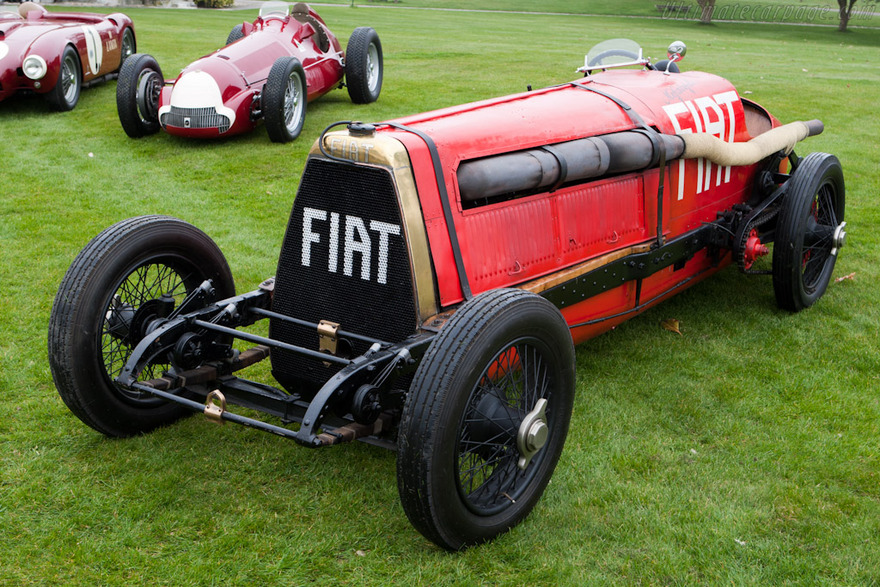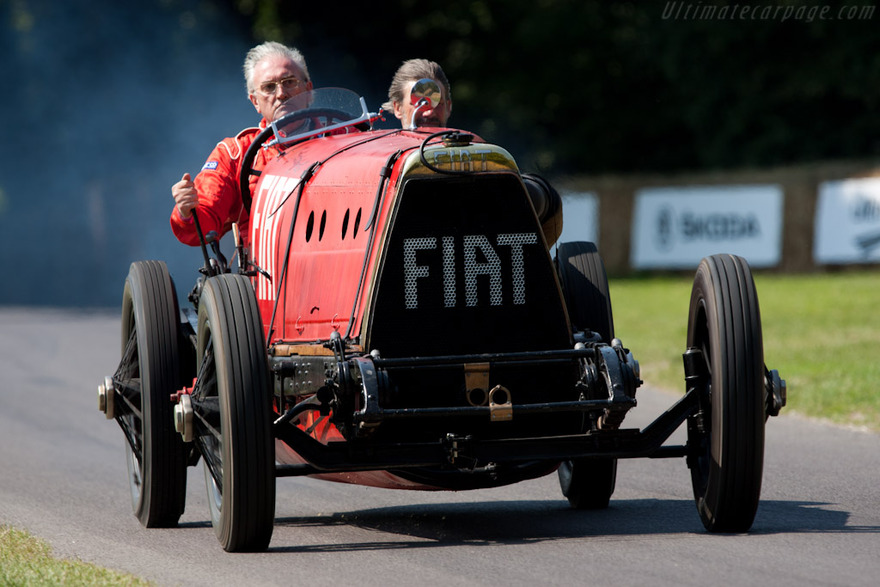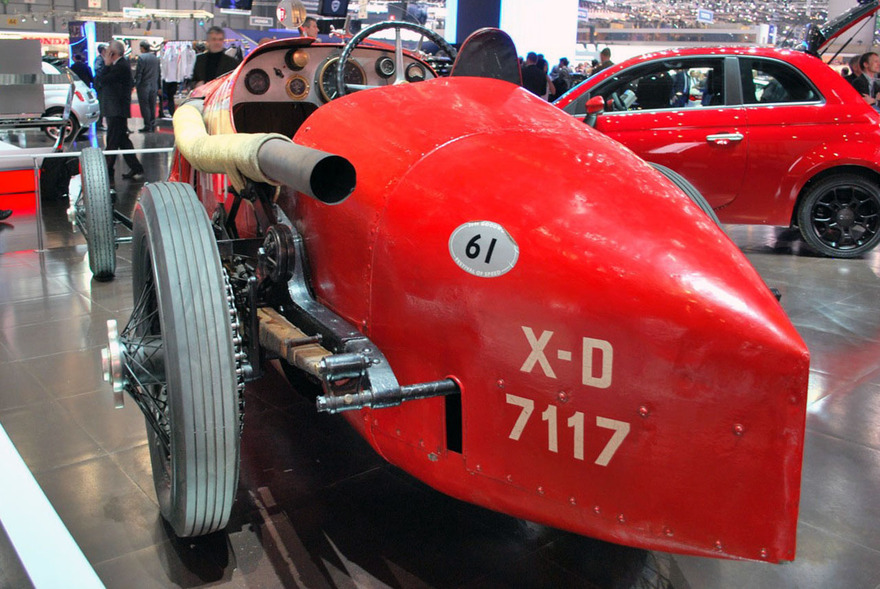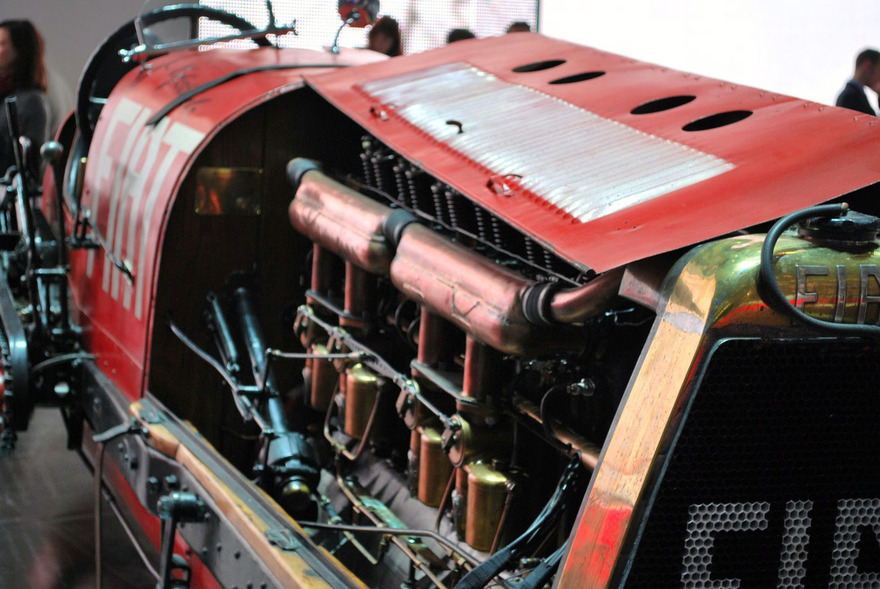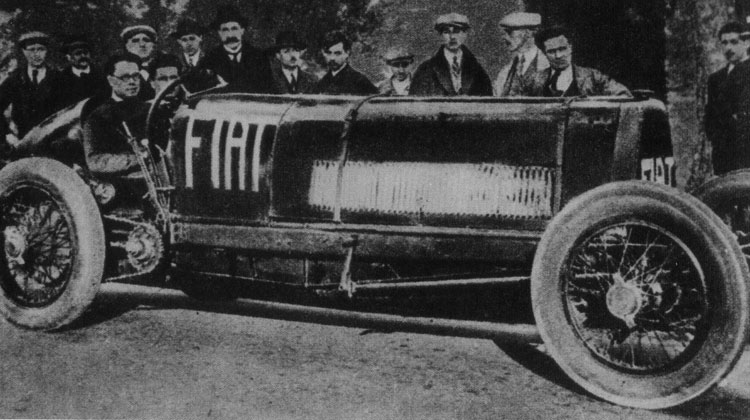“BLAABLARBLEBLAAAH! — was heard in the air and one of the spectators shared his emotions: “The black leviathan flew by. It was spitting out blue smoke with a loud sound, streaming vapour was everywhere around it, flames were coming out of the exhaust pipe”, a story told on one of British blogs of motorsports enthusiasts.
“In 1924 the Italian suicides managed to accelerate the Mefistofele bucket up to 235 km/h setting the new land speed record. I guess some evil spirit was in it”, Top Gear Magazine.
Extracts from an interview with a pilot named Michele found in the old newspaper: “The floorboards on which I was almost sitting were awash with hot oil and slimy water. I could just barely get my right toe onto the footbrake pedal leg, not onto the pad at all... Oh yes, and the car caught fire a bit, several times…It’s a monster with bad manners, slobbering from the undertray!”
All these words refer to FIAT MEPHISTOPHELES. The car which had sold its soul to a devil or maybe was one of his creatures. It started its life as Fiat SB 1908. It was scaring the crowd, enrapturing the frenetic drivers and staying in your head for a long time.
An accident happened in 1922 when John Duff, a pilot taking part in Brooklands, escaped death by some miracle. The engine went to pieces and flew into the air together with the bonnet due to an engine block explosion. But somehow the driver stayed alive...
The wrecked car went into the hands of a man with wonderful character and lots of energy. Ernest Eldridge, whose racing career was by that time awash with “dead” aero engines, decided to create a really scary car of what was left after Duff’s accident.
Eldridge looked at the 18-litre engine with some British cynicism, saw that it was obviously not enough and decided it was time to act. The reckless pilot managed to acquire a 6-cylinder 22-litre Fiat airship engine with one overhead camshaft, pumps belonging to massive aviation engines SIA 7B1 and Fiat R-2 and also the “heart” of Caproni Ca46 bomber. Ernest developed himself the clutch disk from the ground up but it took him a long time to find the 16" wheels. The only thing left before implementing his great plan was to lengthen Mephistopheles to accommodate all those components. The story goes that elements of the famous London bus chassis were used for this purpose.
The new burning for glory Mefistofele with rather elegant bodywork and impetuous from nose to tail was really flying on the race tracks. Its modified “heart” was beating due to 4 valves per cylinder and a total of 24 Magneti Marelli spark plugs. Accelerating up to more than 90 mph at 1800 rpm the car was producing such rattling sounds that it seemed the earth might crack and all hell would break loose. With two carburettors the car reached 320 bhp (editorial note: break horse power — is the power output of the drive shaft on an engine without the power loss caused by the gears, transmission, friction, etc.) Together with a 5 to 1 compression ratio it was not only providing tremendous power but also making Mefistofele release large amounts of vapour. The rebuilt monster weighed two tons.
The same year after its rebirth, at Easter, with the breathtaking for that time 235 horsepower Fiat Mephistopheles scored victory at Brooklands reaching 122 mph (200 km/h). After having stolen all the spotlights at home, Eldridge targeted on “letting out the demon” to the French soil and sent his car to the south-west, the city of Arpajon.
On Sunday morning of July 6, 1924 on a narrow lane near Montlhéry two teams converged to do the final battle. The brave Englishman Ernest Eldridge and sophisticated Frenchman René Thomas fought for the title of the fastest man in the world. They were “armed” with a 22-litre Fiat Mephistopheles and a V12 Delage La Torpille. The red Mefistofele, which had just passed the tests, was proudly flying on the track. Its sparking headlights looking like giant eyes were creating a light tunnel among the dark trees and its guttural unbearably loud whirring noise was thrilling the audience. With its shining 16" wheels looking like enormous muscles, the monster was heading towards the finish line at huge speed of 143.06 mph (more than 230 km/h). Making the Earth tremble, Ernest and Mefistofele set the new record. But somehow it was not ratified! The French pilot René Thomas disputed the results saying that infernal machine was unable to reverse and could not take part in the competitions due to that fact. Ernest left deeply indignant but in one week the Englishman proved the talent and power of his creation.
But it was not enough just to satisfy the claims. Something extraordinary was needed. Eldridge and his intrepid mechanic John Ames — a man with nerves of steel — invented a secret mechanism which added more manoeuvre capability to the car. The triangle throttle invented by them helped getting rid of the engine vibrations and made the fuel delivery smoother. Having liquidated skidding and making the car’s tail swerve on demand, Ernest Eldridge set the new record on July 12, 1924. Mefistofele’s speed of 146.01 mph proved to the world of races that one should not argue with that team.
And after the statement made by Thomas that he had not recognised that victory, Eldridge showed up on Champs-Elysees and parked, in a pointed manner, across the road from the Delage showrooms just when René decided to boast his success and hold a reception.
The car with the sound corresponding to the tone quality of the Italian opera sold its soul to the devil. And the devil was Ernest Eldridge. Mephistopheles appeared in 1923 and set the FIAT company in stone of world speed records forever.
“Even though two months later on September 25, 1924 at Pendine Sands in Wales the Englishman Malcolm Campbell, driving a 350hp Sunbeam Blue Bird, broke the record at 146.16 mph over the flying mile, it was only 0.15 mph quicker than Eldridge!” was once noted by Ross Finlay.
Meanwhile, Fiat does not forget about its historical achievements but also has long-run expectations. Rumour has it that they are planning to launch the production of their own sports car based on Fiat 500 and even more radical KTM X-Bow. And the Italian Lazzarini Design studio had designed a project of turning a small city compact car Fiat 500 into 550hp rear-engine supercar.

